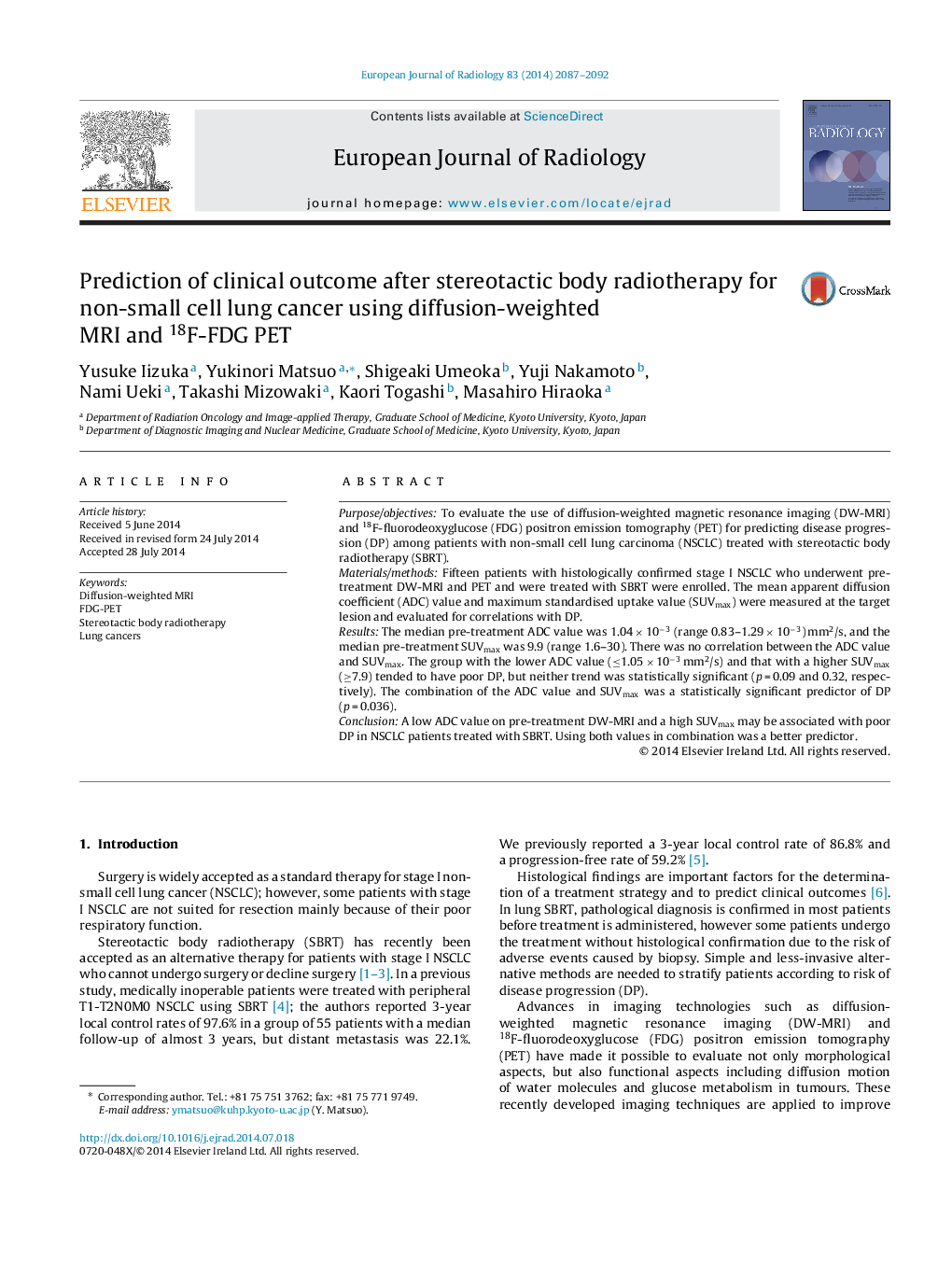| Article ID | Journal | Published Year | Pages | File Type |
|---|---|---|---|---|
| 4225523 | European Journal of Radiology | 2014 | 6 Pages |
•We evaluated DW-MRI and FDG-PET as prognostic factor for NSCLC treated with SBRT.•Lower ADC value was relevant to disease progression after SBRT.•Higher SUVmax was relevant to disease progression after SBRT.•Using both values in combination was a better predictor.
Purpose/objectivesTo evaluate the use of diffusion-weighted magnetic resonance imaging (DW-MRI) and 18F-fluorodeoxyglucose (FDG) positron emission tomography (PET) for predicting disease progression (DP) among patients with non-small cell lung carcinoma (NSCLC) treated with stereotactic body radiotherapy (SBRT).Materials/methodsFifteen patients with histologically confirmed stage I NSCLC who underwent pre-treatment DW-MRI and PET and were treated with SBRT were enrolled. The mean apparent diffusion coefficient (ADC) value and maximum standardised uptake value (SUVmax) were measured at the target lesion and evaluated for correlations with DP.ResultsThe median pre-treatment ADC value was 1.04 × 10−3 (range 0.83–1.29 × 10−3) mm2/s, and the median pre-treatment SUVmax was 9.9 (range 1.6–30). There was no correlation between the ADC value and SUVmax. The group with the lower ADC value (≤1.05 × 10−3 mm2/s) and that with a higher SUVmax (≥7.9) tended to have poor DP, but neither trend was statistically significant (p = 0.09 and 0.32, respectively). The combination of the ADC value and SUVmax was a statistically significant predictor of DP (p = 0.036).ConclusionA low ADC value on pre-treatment DW-MRI and a high SUVmax may be associated with poor DP in NSCLC patients treated with SBRT. Using both values in combination was a better predictor.
